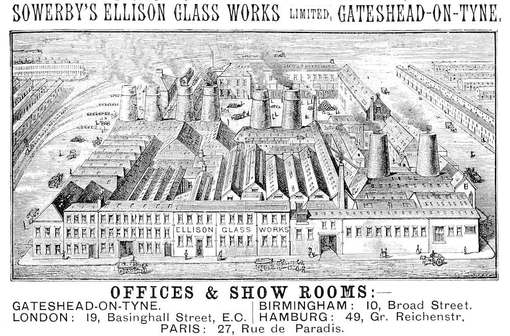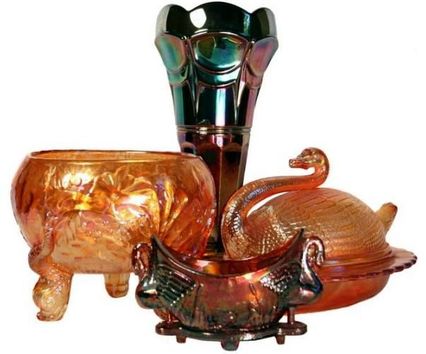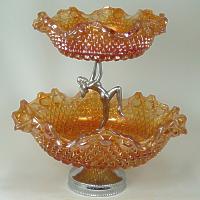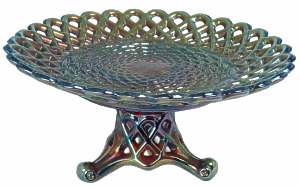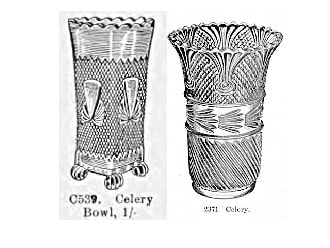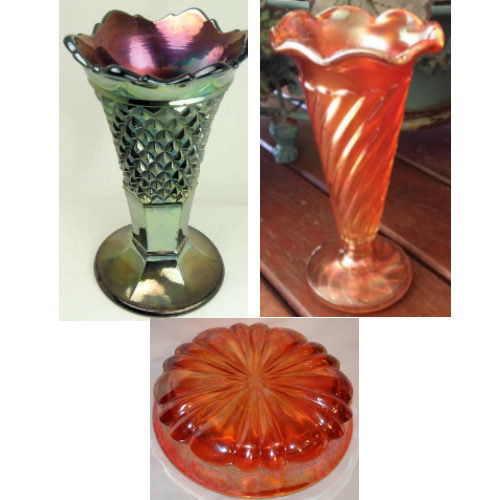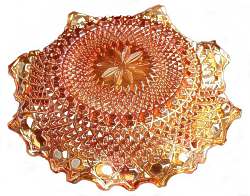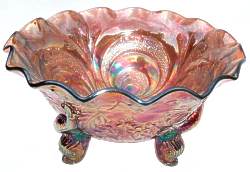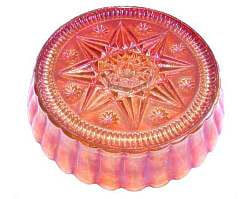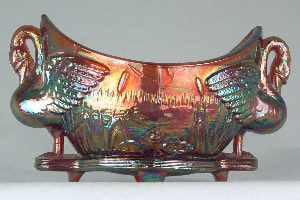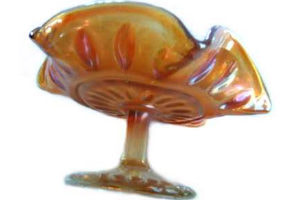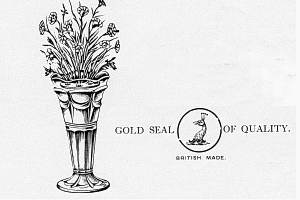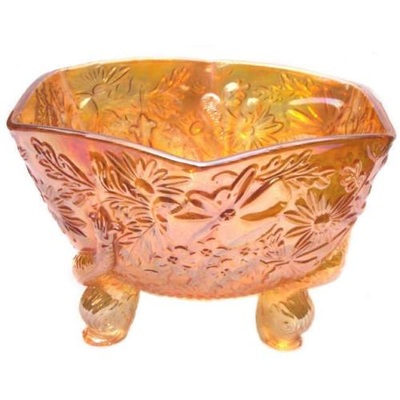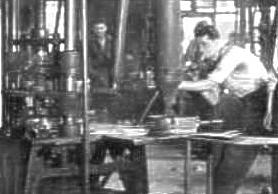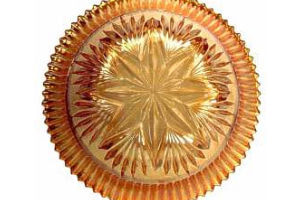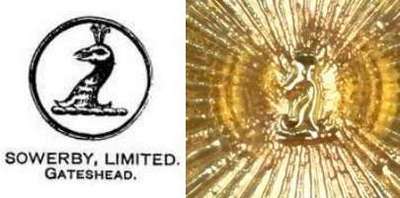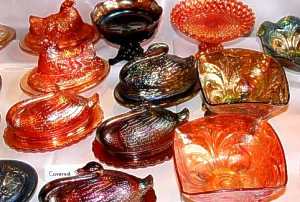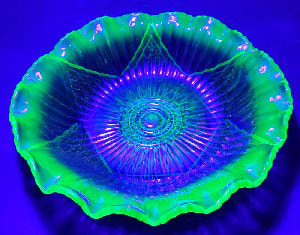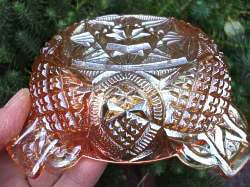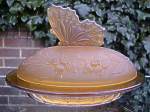Sowerby, Gateshead on Tyne, England
The Sowerby Glassworks was established at Gateshead on Tyne in the north east of England in the early 1800s, at about the same time that Jane Austen was writing her famous novels such as "Sense and Sensibility" and "Emma". Internationally famed for their pressed glass output of the late 1800s, Sowerby also produced some remarkable Carnival Glass during the 1920s and early 1930s. Arguably the most beautiful and sought after examples of their Carnival were those made by re-using old cast iron moulds that dated back to the 1880s. The Director of the family business at that time was John George Sowerby. He was a talented artist as well as a businessman, and is credited with designing many of their moulds.
|
The area where the Sowerby factory was located, known as Tyneside, is an interesting region, often fondly referred to as "Geordieland". A true "Geordie" is someone who was born in the area of the River Tyne - that is, Newcastle, South Shields and Gateshead. It also includes the pit villages and towns - for this is a coal mining region with deep rooted traditions. The lilting dialect of the area is also called "Geordie" - a nickname for George…… and the coal miners used to be tagged "George" in much the same was as English sailors were called "Jack", and English soldiers were called "Tommy". So "Geordie" stuck for everyone in the region. The area was rich in local black clay, sea sand and kelp - all just what the glassmaking industry needed. So Sowerby's thrived, along with several other major glassworks such as Davidson and Greener. The accent was on quality and good, artistic designs in order to compete with goods from the USA, Belgium, France, Germany and Bohemia - but prices were kept deliberately low for the benefit of the local working class population, partly to maintain employment and partly to educate their taste in home decorating. The beautiful pressed glass from all these factories is avidly collected today. |
|
Some Sowerby favourites are shown on the right. Each one is an absolute masterpiece of mouldwork, three of which were originally made in the 1880s and then re-used for Carnival nearly 50 years later, during the 1920s and early 1930s. Now THAT really was enterprising! The Sowerby Carnival Glass shown here is - front and centre: the rare Royal Swans (Number 1382) posy holder in amethyst Carnival. The pattern was first introduced by Sowerby in the 1880s. - left: a Diving Dolphins (Number 1544) footed bowl in marigold. This cupped in shape is quite rare and is often referred to as a giant rosebowl. Originally introduced in the 1880s, there was one significant change made to the mould when it was used later for Carnival production - a "Scroll Embossed" design was added, replacing the previously plain interior. - right: a magnificent marigold Covered Swan (Number 2031) covered butter dish, also made using an earlier mould from the late 1800s. - back centre: Sowerby Drape vase (Number 2437) in black amethyst. This was a new design for Sowerby and in fact was shown in a 1929 Pottery Gazette ad. |
Read and See More about Sowerby - click on any image.
